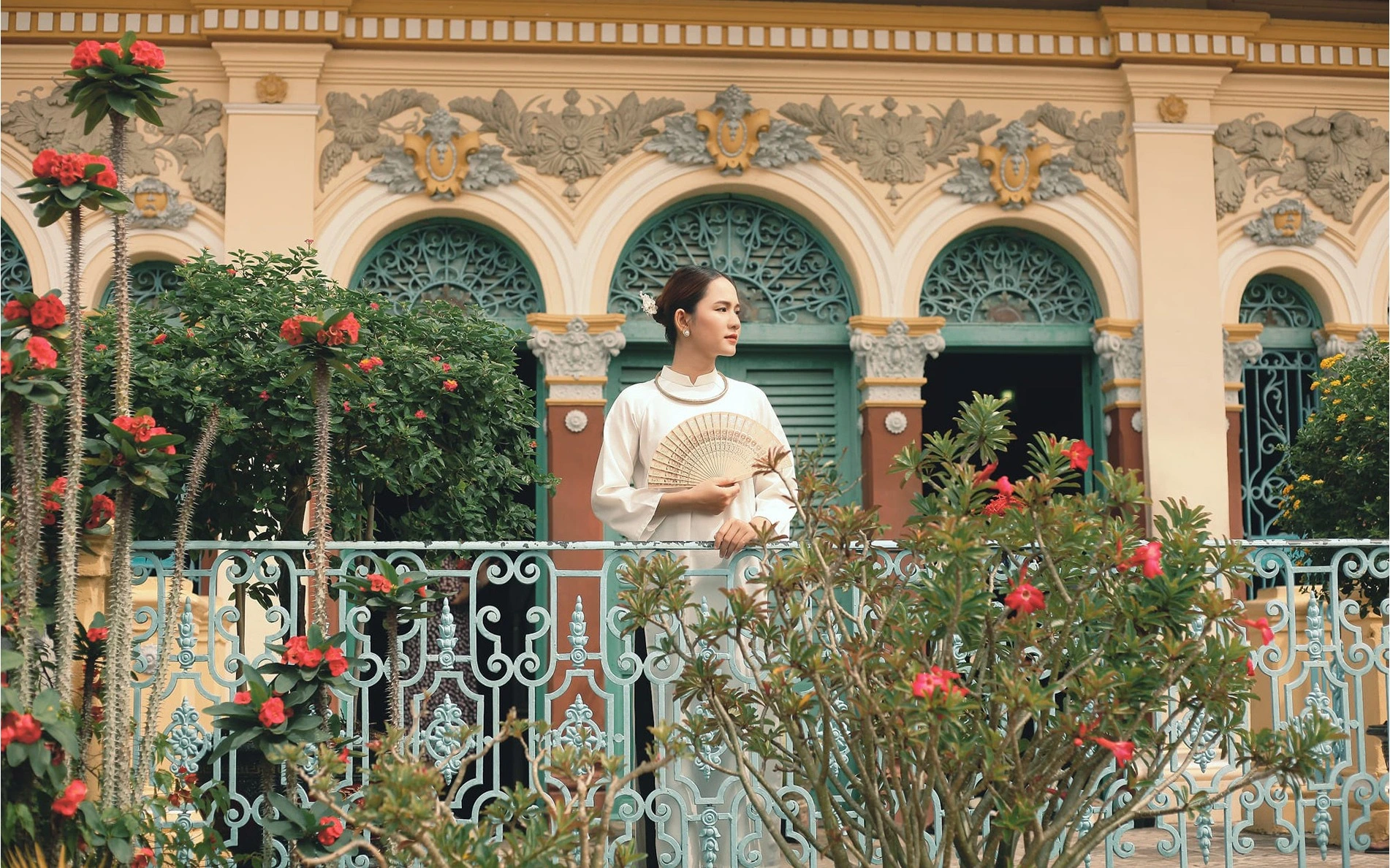Located on Bui Huu Nghia Street, Binh Thuy Ward, Binh Thuy District, Can Tho City, the ancient house of a Duong family (also known as Binh Thuy ancient house) built in 1870 is a familiar tourist destination , attracting a large number of tourists inside and outside the city to visit for many years. Binh Thuy ancient house is the oldest surviving cultural architecture in the West and is currently a familiar cultural tourist destination in the South.

Stepping through the main gate outside the street is the side gate inside, designed as a welcome gate with ancient Asian architecture, including 4 round columns: 2 wood, 2 cement. Rui system, sesame, wooden crossbars, pipe tile roof, green enamel roof bundle ledge.
The gate is also decorated with many cement patterns and motifs such as goldfish, unicorns, vases ,.... The front and back of the side gate have 2 boards, one is the Chinese character "Phuoc An Hieu" and the other is the Chinese character "Palace worships the Duong family".
The campus of Binh Thuy ancient house is quite large, especially the yard is paved with 40 x 40cm ship tiles and planted with all kinds of ornamental plants such as areca palm, pine, fern, talent (magnolia), Thai porcelain, cow breast. Especially in the left corner of the yard there is planted a Mexican cactus "Prismatic Needle", which first flowered in 2005.
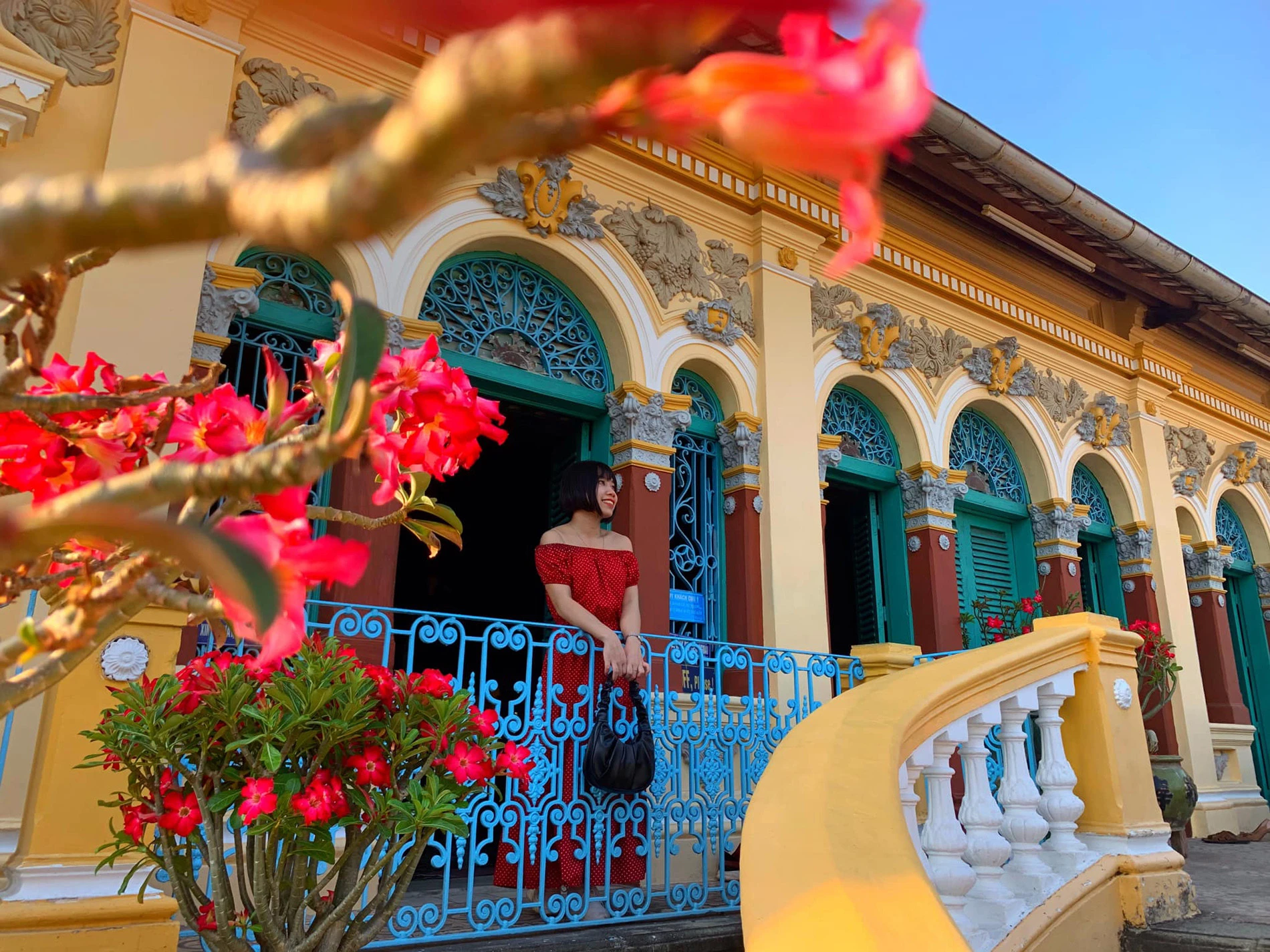
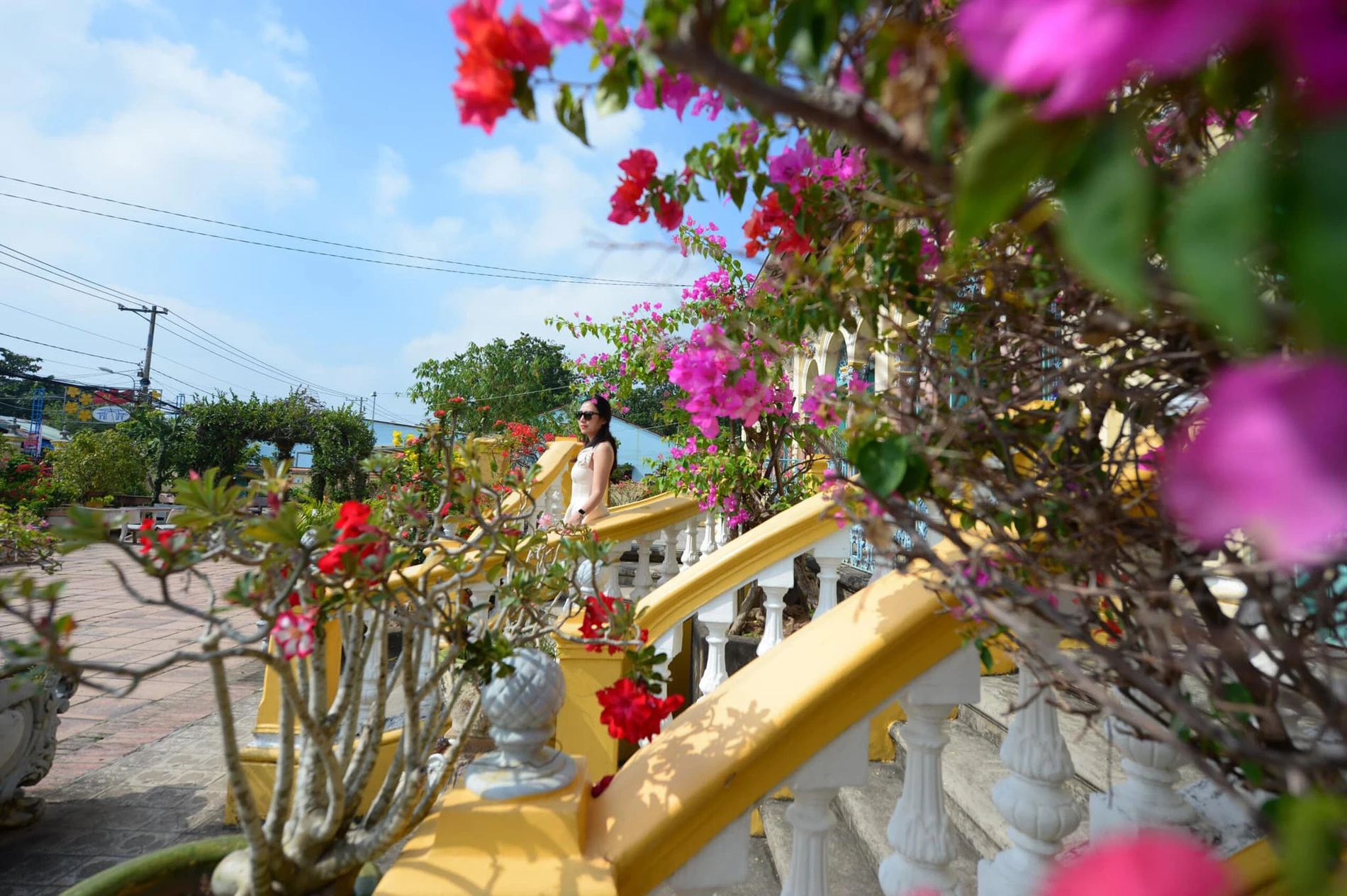
In the middle of the courtyard, a rockery about 4m high, located in the aquarium is both for decoration and as a screen for the main house. In the corner of the courtyard on the right is the earth god shrine area and a cool house roofed with fish scale tiles.
The house has a registered layout. Horizontally, the house has 5 pavilions – 22m wide. In depth, the house has 3 layers: front house, middle house and back house with a depth of 16m.
From the courtyard, visitors can enter the main house area in 4 directions of stairs. Two staircases in the outer naves and two arched staircases are arranged on either side, leading into the grand hall in the nave.
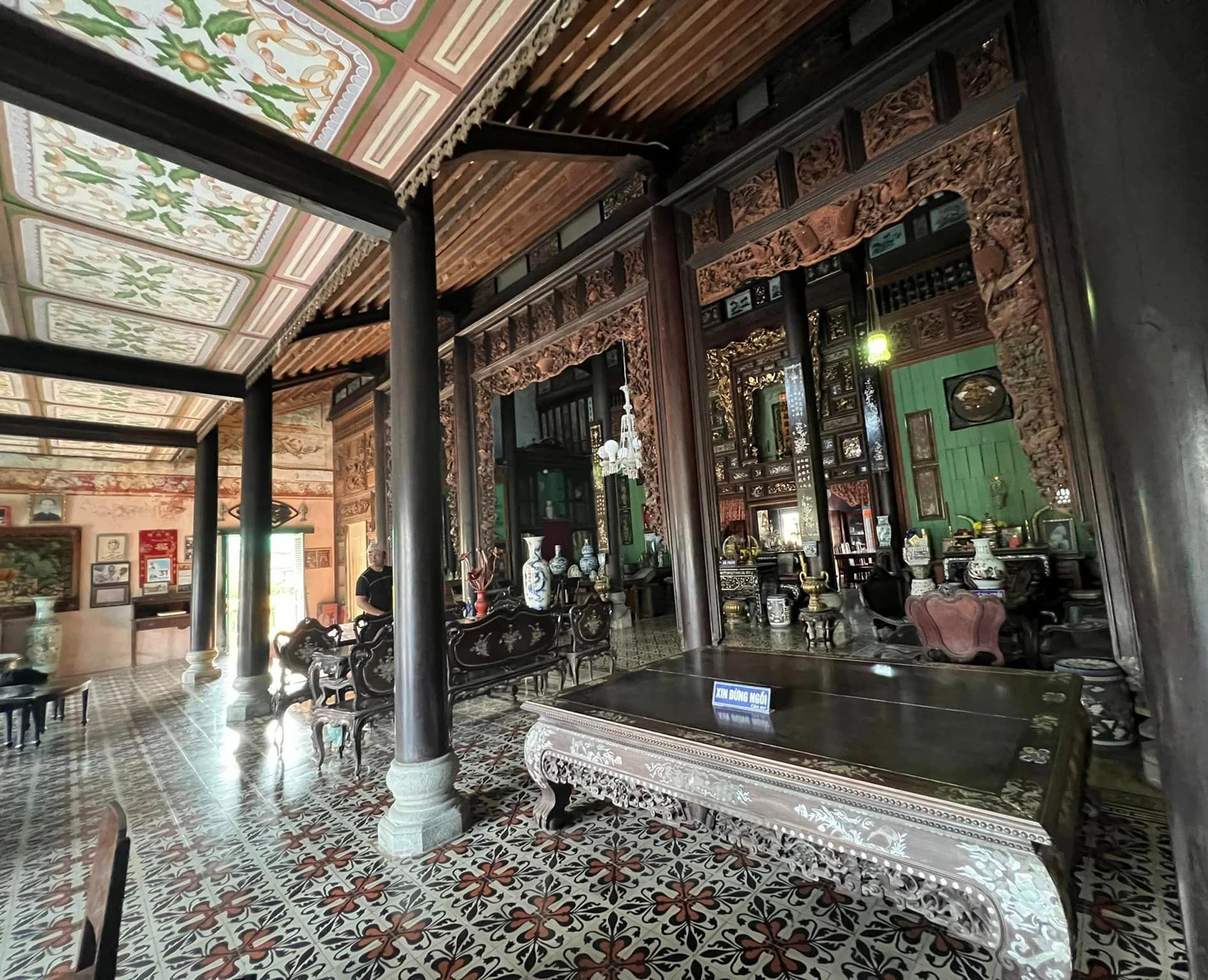
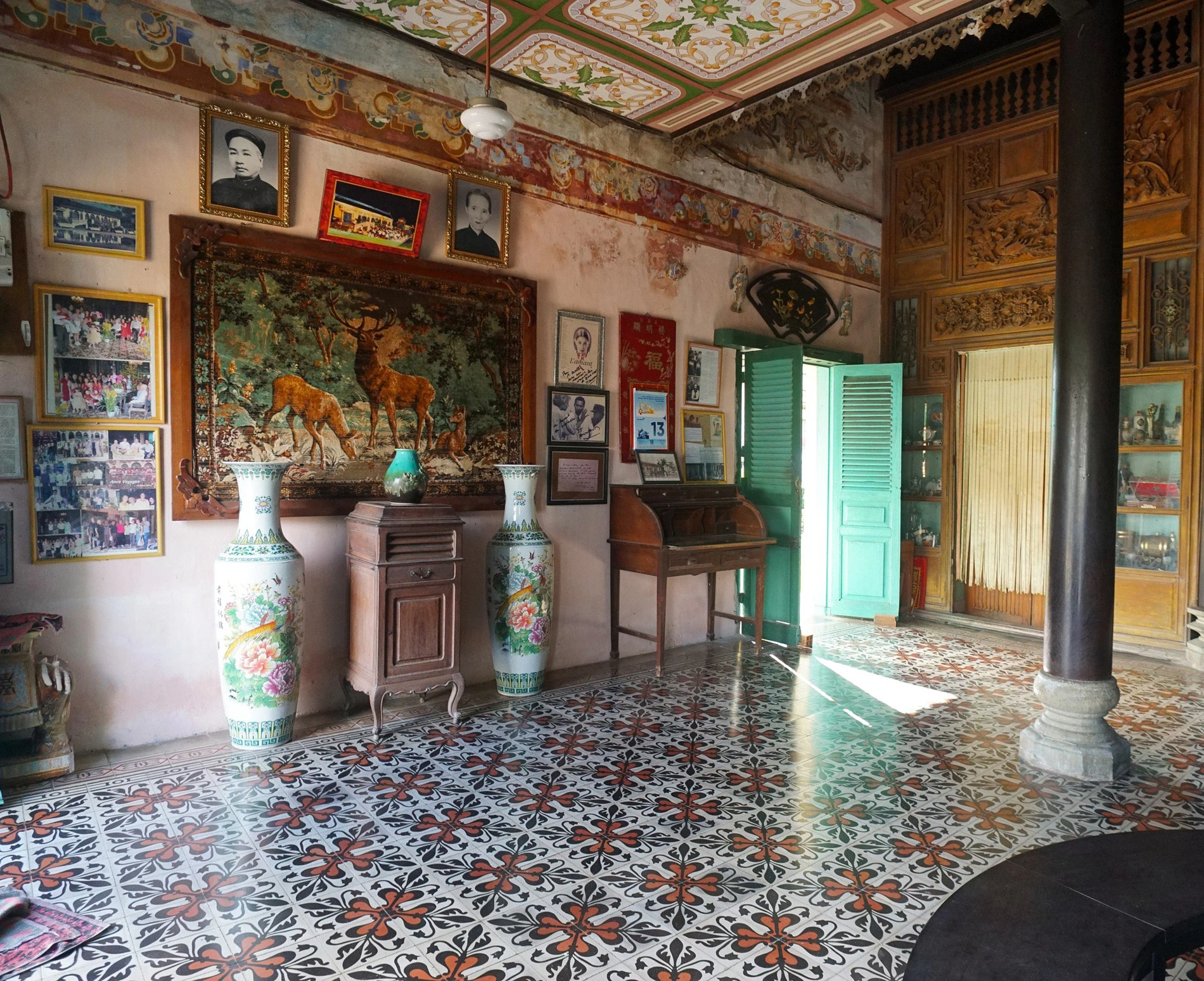
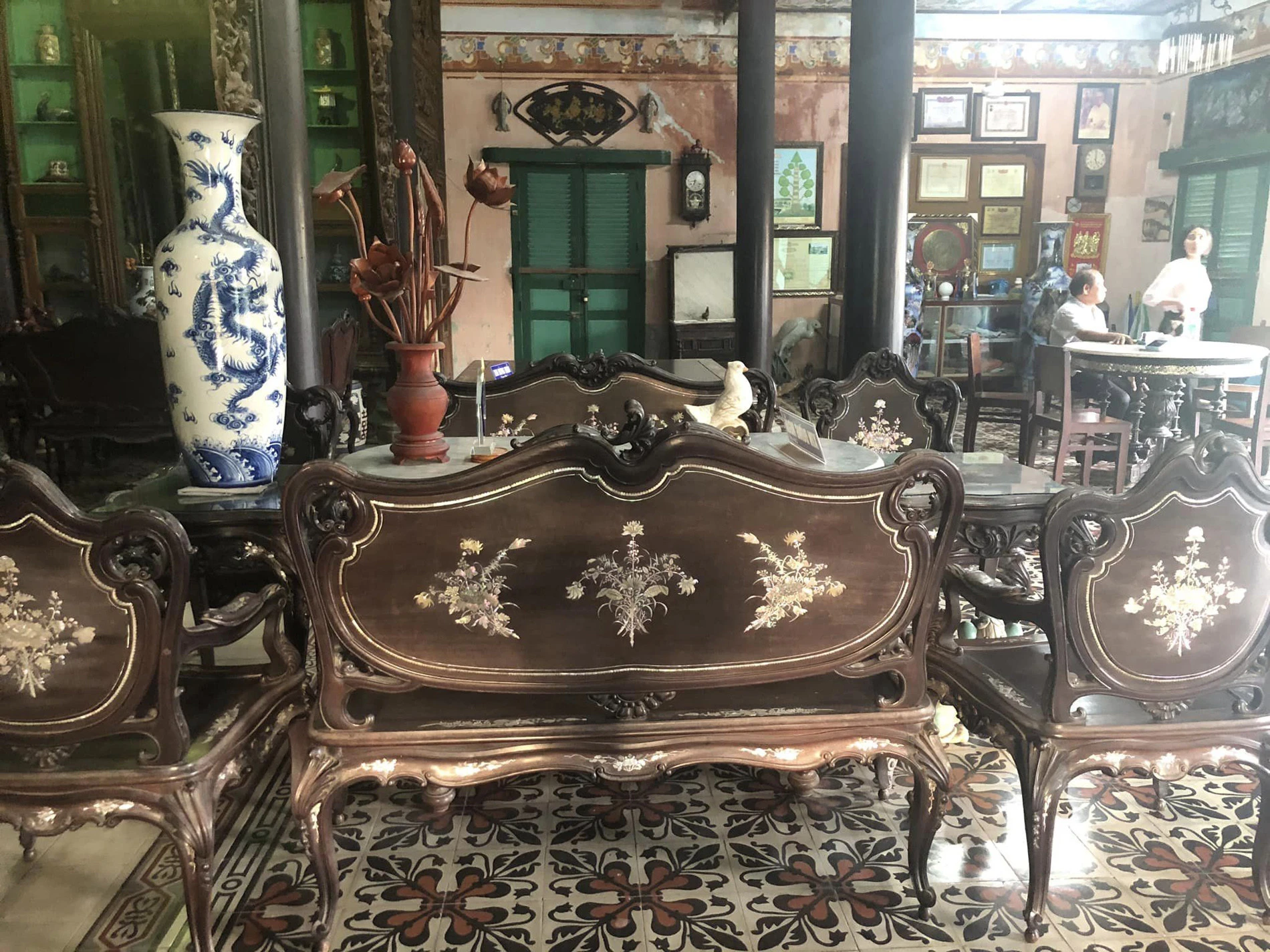
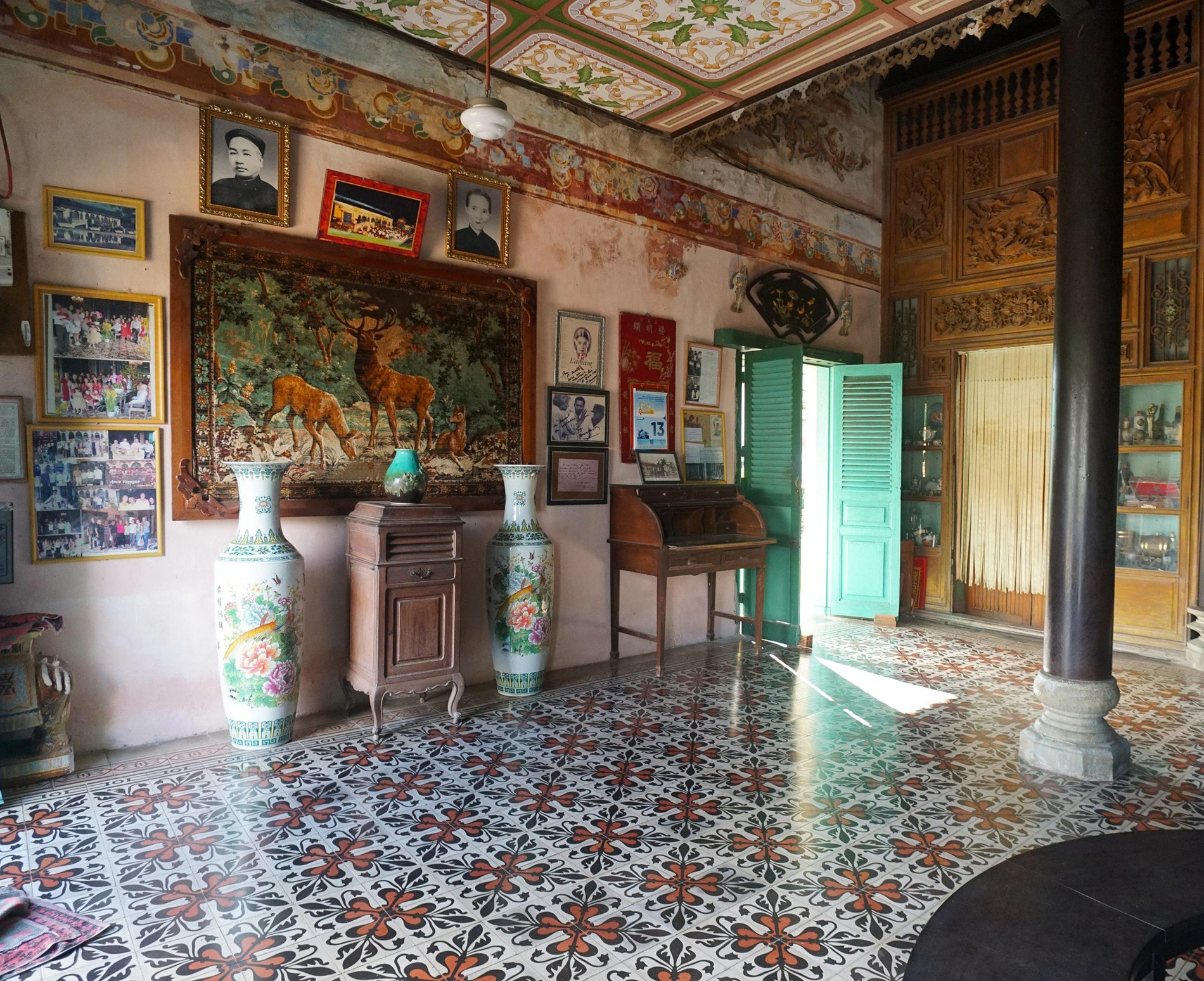
The floor is 1m higher than the garden, the pavement is made of blue stone. According to Southern folk experience, during construction, the owner of the house poured a layer of granulated salt about 10cm thick before lining the foundation with encaustic tiles. This method both helps to repel insects, bring ventilation, and avoid invasive evil objects according to feng shui concept.
Around the house built brick walls made of lime lakes. The roof has 3 layers of tiles: 2 layers under the shape of a trough, a layer dipped in white powdered lime and the top layer uses pipe tile. This design creates a feeling of high, airy and brighter ceilings, while keeping the house cool in the tropical climate in the South.

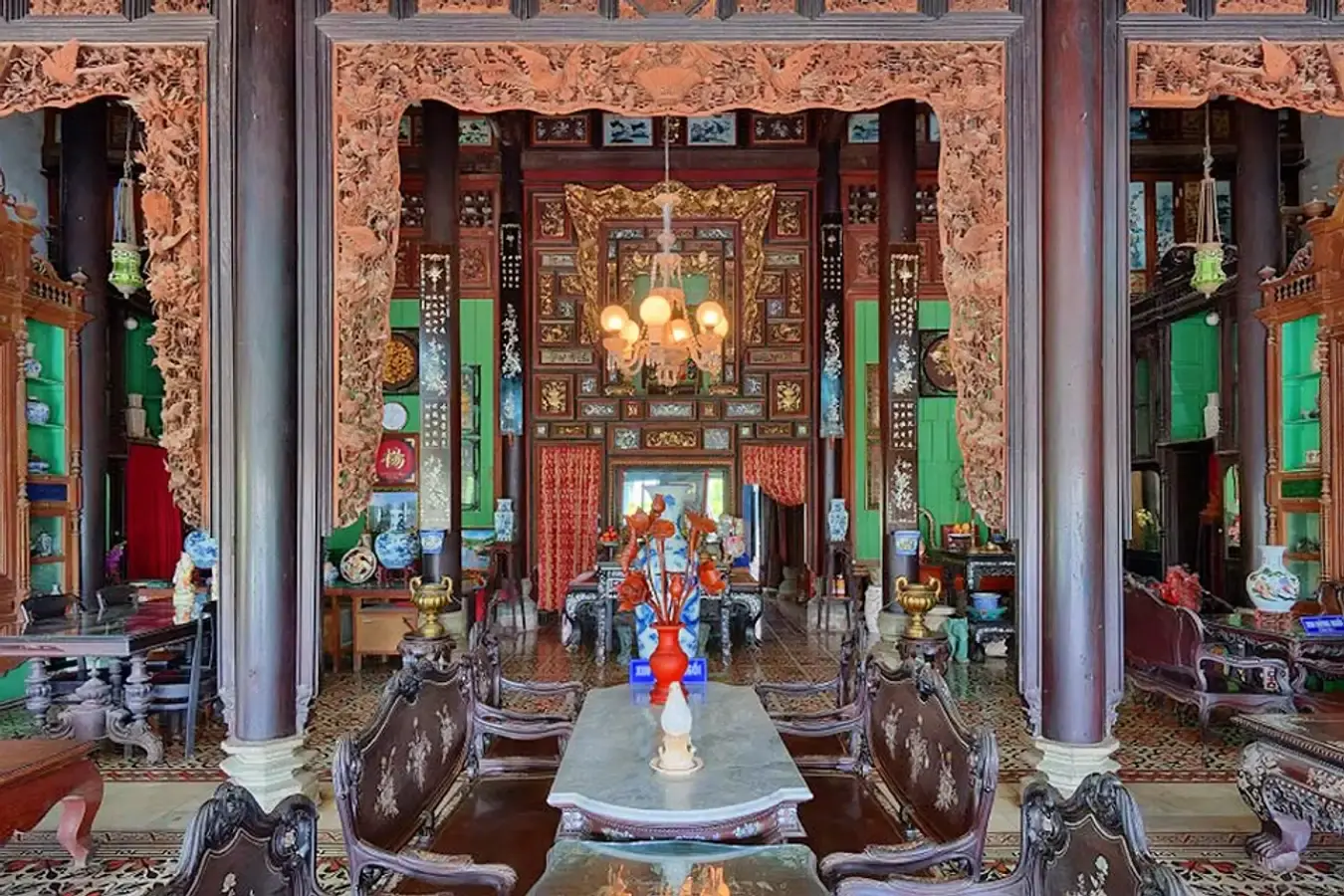
On the front of the building, visitors can clearly feel the Western decoration, including the heads of columns in Greek – La form; The patterns are embossed with cement such as flowers, squirrels, bunches of grapes,... and the typical shutter system in the works built by the French in Vietnam to suit the local climate.
Stepping inside is the front house area, used as a reception place for important ceremonies, decorated in Western European style. In addition to the French doorways with rolling arches, there is a ceiling flattened by a false ceiling, elaborate pattern decoration.
Next comes the middle house. In particular, the 3 naves are places of worship, decorated purely Vietnamese with incense tables, inauguration altars, lien ... are all made of precious wood inlaid with mother-of-pearl. The other two outer pavilions are the common place of the family
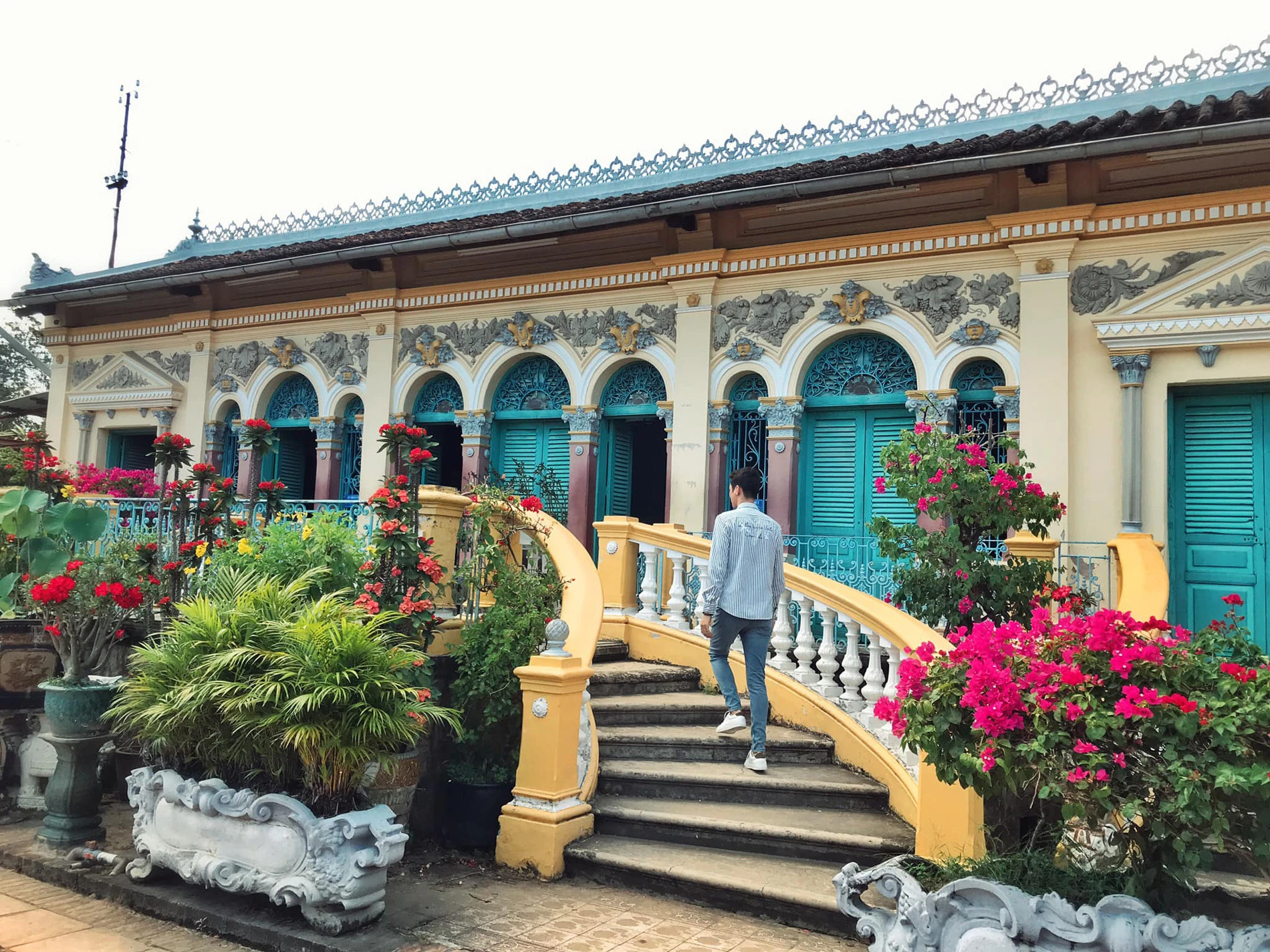
Separating the front house from the middle house is an elaborately carved colonnade of bao lam and lien ba with familiar images of Vietnam and the South such as: apricot, orchid, daisy, bamboo, lotus, ostrich, tung loc, bird, peacock, bat, rabbit, shrimp, crab, fruit gauge, grapes ... Surrounded by cells with many shapes such as squares, rectangles, hexagons are also meticulously carved and aesthetically pleasing.
The latter house is basically the same as the previous one, a place to receive female guests and own family activities.
In the house, there are still many ancient furniture such as incense, tables and chairs, cabinets, collapses ...; especially the wooden salon set made in the style of LOUIS XV, placed in the nave of the front house.
The living room is designed in a classic European style with a Louis 15 French salon set, classic chandeliers made of white dang ...
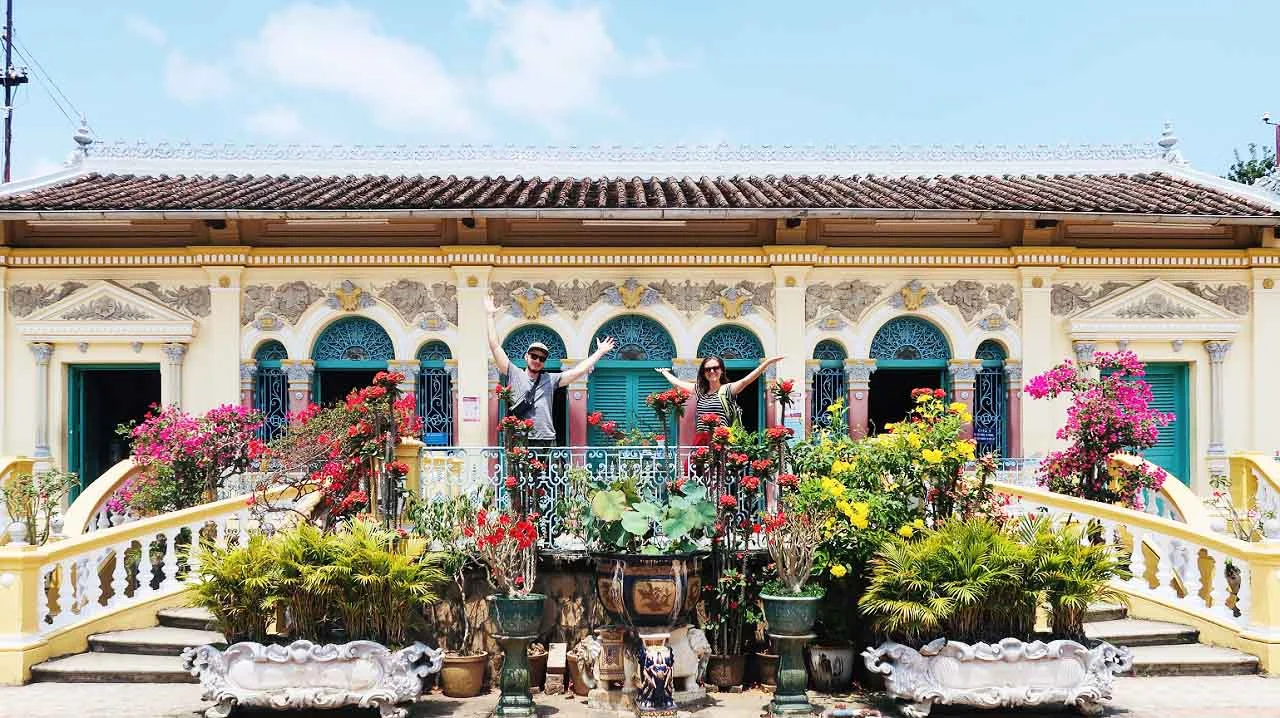
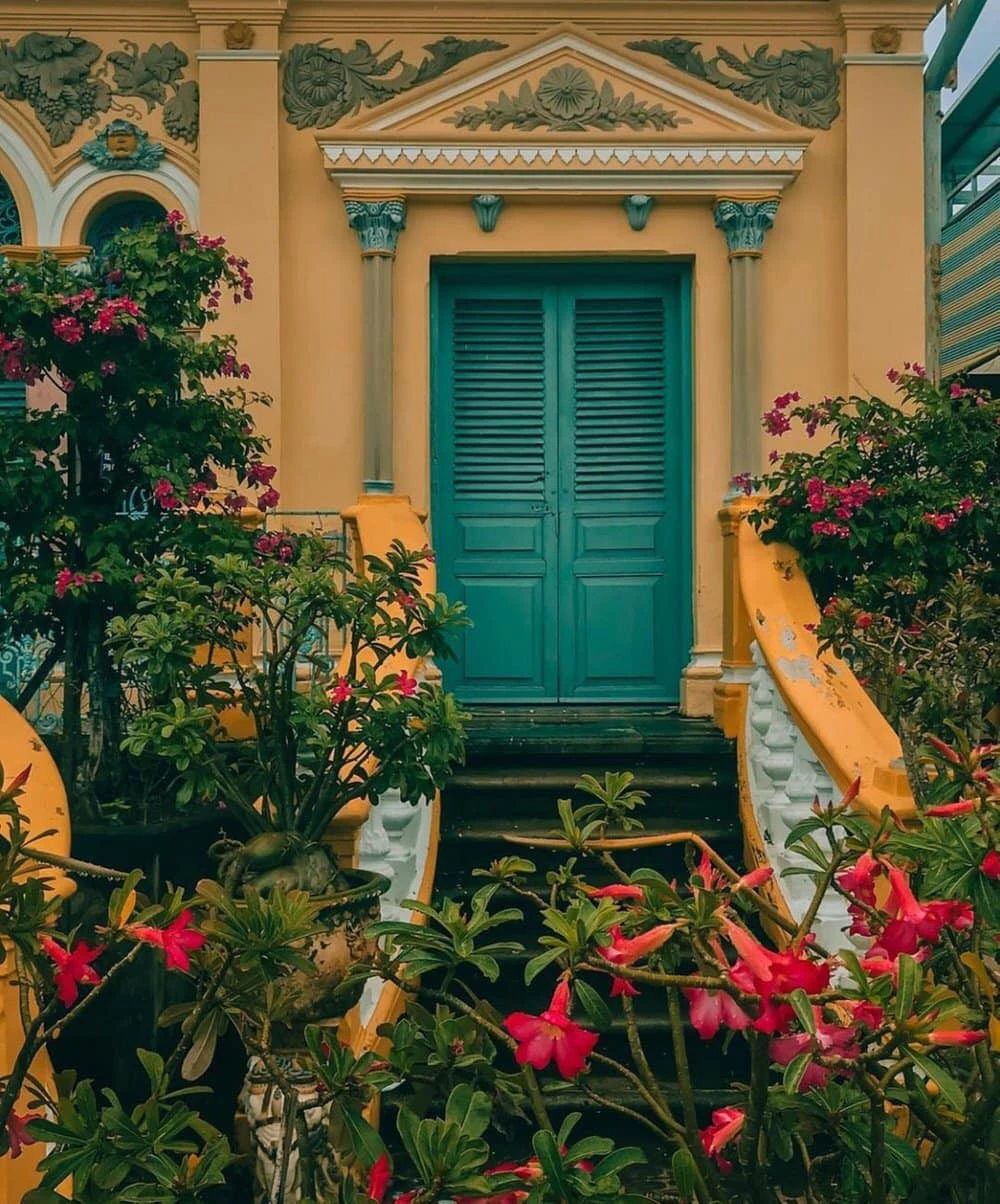
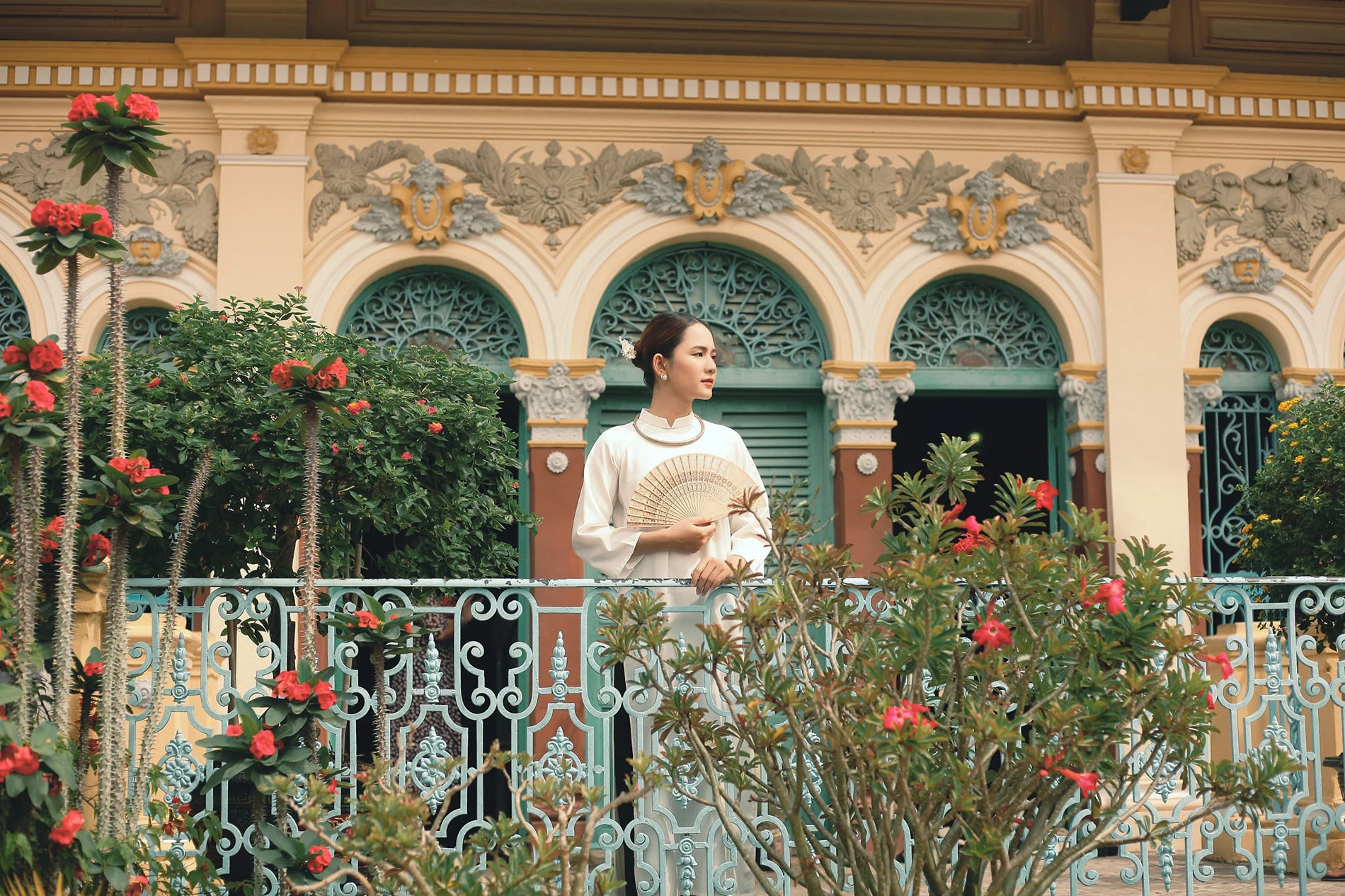
It is known that Binh Thuy ancient house used to be the setting of many movies such as: The horizon there, The hundred-burning bamboo, The poor family, The beauty of Tay Do, Life debt, Alluvial roads ... and especially the famous film "The Lover" by French director Jean Jacques Annaud.
If you have the opportunity to travel to Binh Thuy district, in addition to visiting and learning about ancient houses, visitors can combine to visit some other interesting destinations such as Hung Can Tho Kings Temple, Con Son islet, Ba Tuan ecotourism garden,... In addition, coming here, visitors also have the opportunity to enjoy many delicious dishes and local specialties such as fish sauce hotpot, percussion noodles, pancakes, grilled snakehead,...
According to VNN
